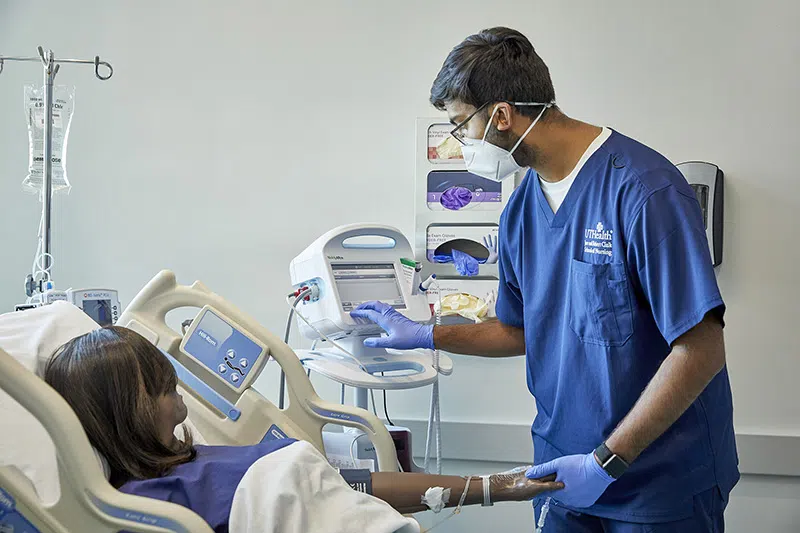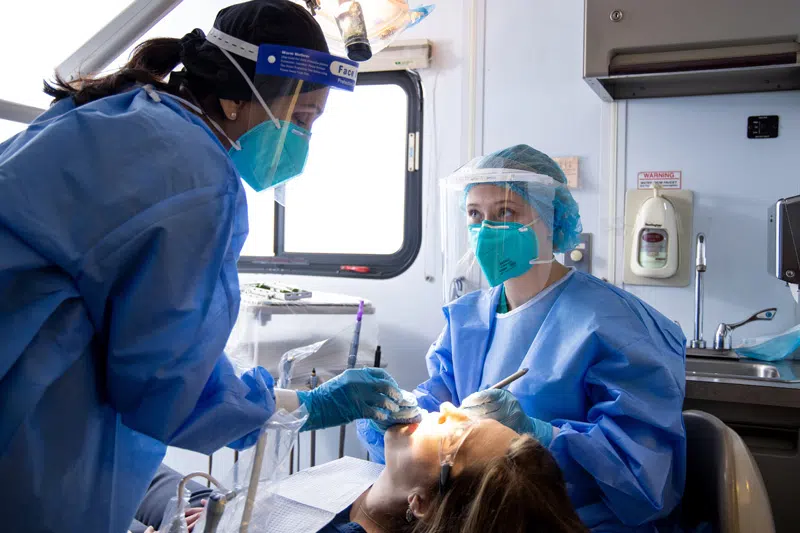The transportation and shipment of biological materials is subjected to stringent regulatory controls. Individuals involved in the transportation and shipment of infectious substances must receive training on the applicable regulations and requirements before shipping such materials. EHS provides regular training sessions for those individuals requiring shipping training. See the dates below for the Infectious Substances Shipping training or call the Biological Safety Program at 713-500-8170 for questions or assistance with shipping.
Any movement or transport of biological materials within a laboratory or building should be performed in such a manner as to prevent any spilling and/or leakage. Materials should be transported in containers that can be sealed in some manner, and a secondary container should be used. If the outside of the primary container is suspected of being contaminated, decontaminate using 10% bleach solution, an EPA approved disinfectant, or a disinfectant appropriate for the biological material in use. If the material to be transported could puncture the primary container, a secondary, puncture-resistant container should be used. Any equipment that is suspected of being contaminated must also be contained or decontaminated prior to movement or service work.
For the purposes of shipping, biological materials may be classified as infectious substances (including “biological substances, category B” and “patient specimens”), biological products, genetically modified organisms, or medical/clinical waste. The shipment of certain genetically modified organisms is also regulated.
Infectious substances
Substances which are known or are reasonably expected to contain pathogens. Pathogens are defined as micro-organisms (including bacteria, viruses, rickettsiae, parasites, fungi) and other agents such as prions, which can cause disease in humans or animals. Infectious substances remain in Division 6.2 but are now separated into the following categories:
Category A
An infectious substance which is transported in a form that, when exposure occurs, is capable of causing permanent disability, life-threatening or fatal disease to humans or animals. Indicative examples that meet these criteria are given in Table 3.6.D.
- Infectious substances meeting these criteria which cause disease in humans or both in humans and animals must be assigned to UN2814. Those which cause disease in only animals must be assigned to UN2900.
- Assignment to UN2814 or UN2900 must be based on the known medical history and symptoms of the source human or animal, endemic local conditions, or professional judgment concerning individual circumstances of the source human or animal.
Note: The proper shipping name for UN2814 is Infectious Substance, affecting humans. The proper shipping name for UN2900 is Infectious Substance, affecting animals.
Category B
An infectious substance which does not meet the criteria for inclusion in Category A. Infectious substances in Category B must be assigned to UN3373 except that cultures must be assigned to UN2814 or UN2900, as appropriate.
Note: The proper shipping name for UN3373 is UN3373 is Biological Substance, Category B. The terms “diagnostic specimens” and “clinical specimens” are no longer acceptable as of January 1, 2007.
Human or animal material including, but not limited to, excreta, secreta, blood and its components, tissue and tissue fluids, and body parts being transported for purposes such as research, diagnosis, investigational activities, disease treatment or prevention, see UN3373. (This does not include blood or blood components collected for the purpose of transfusion or for the preparation of blood products to be used for transfusion or transplantation).
When transported, infectious substances (both Category A & B) are classified as dangerous goods and must be shipped in accordance with federal (US Department of Transportation; US Postal Service) and international (International Air Transport Association) regulations.
Patient Specimens
Exempt specimens are those collected directly from humans or animals, for which there is a minimal likelihood that pathogens are present. Professional judgment should be used to determine if a substance is exempt. Examples include blood or urine tests for cholesterol levels, blood glucose levels, hormone levels, or prostate specific antigens (PSA); tests required to monitor organ function such as heart, liver or kidney function for humans or animals with non-infectious diseases, or therapeutic drug monitoring; tests conducted for insurance or employment purposes and are intended to determine the presence of drugs or alcohol; pregnancy tests; biopsies to detect cancer; and antibody detection in humans or animals.
Biological products
Products derived from living organisms that are known not to produce viruses, toxins, etc. and are manufactured and distributed in accordance with requirements of national government authorities. These include, but are not limited to, finished or unfinished products such as vaccines. Biological products are not currently regulated for the purposes of shipping.
Infectious Substances (Category A) Shipping Requirements
- Triple layer packaging (materials used for transport must be tested to ensure sample won't leak)
- Absorbent material
- Itemized contents list
- Outer package must bear Class 6.2 Infectious Substance diamond label
- Additional labeling and marking requirements
- Shipper's Declaration required
Infectious Substance, Category B Requirements
- Triple layer packaging
- Materials used for transport must be tested to ensure sample won't leak
- Outer package must bear UN3373 diamond label
- Outer package and air waybill must bear "Biological Substance, Category B" statement
- No Shipper's Declaration required; only airway bill
Infectious Substance Shipments with Dry Ice Requirements
- Never place dry ice in a sealed container!
- Outer package must be approved to hold dry ice, otherwise use an overpack
- UN 1845 Dry Ice label, including estimated weight of dry ice
- Class 9 Miscellaneous Dangerous Goods label
Importation/Exportation of Infectious Substances
Depending on your shipment's contents and its location of origin or intended destination, an importation or exportation permit may be required. To determine if a permit is required, please visit the following locations, or contact the Biological Safety Program at 713-500-8170 for more assistance.
Importation
Centers for Disease Control and Prevention,
Permit to Import or Transport Agents or Vectors of Human Disease
(404) 498-2260
Exportation
US Department of Commerce, Bureau of Industry and Security
(202) 482-4811
For directions to the CYF. Questions regarding training? Contact Stephen David at 713-500-5858.
Questions regarding Infectious Substance Shipping? Contact Biological Safety at 713-500-8170

 Featured Donor
Featured Donor









